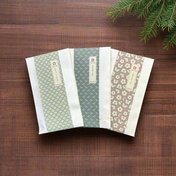Happy (belated) spring equinox!
Have you been enjoying any new smells or new plant growth, more green and sunshine, flowers reaching towards the light? In Japan, the spring equinox (in Japanese; 春分の日 shunbun no hi) is now a national holiday to welcome the spring season, to celebrate the cycles of nature and living organisms with reverence and honor.
This time also coincides with the “hanami” season when we indulge ourselves and admire the beauty of different varieties of cherry blossom (sakura) trees with family and friends, especially the someno yoshino trees (check out: Feel Sakura in Your Mind, Bring Sakura to Your Table by Sachiko-san). In fact, the Japan Meteorological Agency announced on the 22nd of this month that the someno yoshino flowers are in full bloom in Tokyo. Unfortunately, this year, due to Covid, the Japanese people have been strongly encouraged to refrain from their usual social gatherings underneath the blooming trees. The major parks even have fencing to prevent picnicking, but of course, the flowers will continue their beautiful performance!
 Somei yoshino blossoms in Tokyo, Japan; photo by Moé Kishida.
Somei yoshino blossoms in Tokyo, Japan; photo by Moé Kishida.
 Cerasus campanulata (Japanese: 寒緋桜 カンヒザクラ); photo by Kajihara Tea Garden
Cerasus campanulata (Japanese: 寒緋桜 カンヒザクラ); photo by Kajihara Tea Garden
10-year Anniversary of the Great Tsunami and Earthquake
While the cherry blossoms continue to awe, two weeks ago on March 11th, marked the 10 year anniversary of the Great Tsunami and Earthquake (9.0-magnitude (Mw)) which caused unprecedented devastation in Northeastern Japan. While I personally feel I would like to reconnect a bit more to the memories and people I encountered from that year, it made me recall the Japanese kanji of the year 2011, “Kizuna (絆)” which refers to the bonds and connections between people.
Kizuna was voted kanji of the year by the general public as 2011. The heartbreaking year saw the Japanese people come together as a nation, and along with help from many countries, to support those who were affected by the earthquake and tsunami. Even to this day, more than 40,000 people are still unable to return to their homes as a result of the radioactive contamination of the Fukushima Nuclear Plant. And survivors are still struggling to recover from wounds, especially from those that remain in their hearts. If you have not read the most recent newsletter from Yunomi, this month, we are matching funds with Peacewinds Japan (up to 100,000 yen), in memory of this day.
 Kesennuma Bay, Miyagi Prefecture, Japan, April 19, 2011; photo by Moé Kishida.
Kesennuma Bay, Miyagi Prefecture, Japan, April 19, 2011; photo by Moé Kishida.
 Rikuzen-Takata City, Iwate Prefecture, Japan, spring 2011; photo by Kenzo Nishi.
Rikuzen-Takata City, Iwate Prefecture, Japan, spring 2011; photo by Kenzo Nishi.
At this 10-year mark, with the current situation of social distancing, we are all experiencing a degree of separation, loneliness, and lack of human interaction and touch. On the other hand, as we are all perhaps spending more time at home, you may be drinking more Japanese tea… Aha! do you feel that some kizunas (bonds/connections) have been strengthened during this pandemic? With family, close friends, and perhaps, even with Japanese tea farmers? I am curious about new insights into the word kizuna during these times.
Countdown to Shincha Season!
To wrap up on a positive note, on the day of the spring equinox, I came to a realization that we are now half way (and as I write this, less than half way!) to hachi-jyu hachi-ya (八十八夜;the 88th night), which means the beginning of the shincha (新茶;new tea/first flush) season.
To review, in Japan, hachijyuhachiya refers to the 88th night since the beginning of spring (i.e., February 2nd or 3rd) according to the Japanese lunar calendar. In The West, one may be familiar with this time as Groundhog’s day or St.Bridget’s Day. Traditionally in Japan, many people were involved in farming. Thus, the 88th night signified a time when farmers became very busy as they started to harvest the fresh tea leaves and began planting seeds.
Today, shincha is not always harvested on the 88th night (which falls around May 2nd) as the time of first harvest depends on the weather conditions, the tea farm, the region, climate change, etc. In fact, in some regions, the first harvest can even occur in March. Tea farmers and tea lovers still utilize the term hachijyu-hachiya and the first flush tea is what everyone looks forward to, as the new leaves are considered to be the best. These leaves have a special freshness, a delicacy, and a sweetness that is a beautiful call to enter the light of summer. It is even higher in nutrients than other harvests, perhaps because the tea bushes have been storing nutrients throughout the winter months… Yes! This is when tea farmers like Uejima-san (Uejima Tea Farms) starts to get into warrior mode and Ayumi-san (Chittorattsu) forgets to listen to the songs of the birds because they become so busy with the harvest.
The spring equinox marks the midpoint to the 88th night. We still have over a lunar cycle to go but it seems sweet and grounding to have something to look forward to, which is in alignment with the rhythms of the Earth. And even though Mother Nature can be tremendously powerful and harsh, I am appreciating the new spring energy that is vibrating around me.
 Flowers blooming in the aftermath from March 11th, Spring 2011; Shichigahama, Miyagi Prefecture, Japan; photo by Moé Kishida.
Flowers blooming in the aftermath from March 11th, Spring 2011; Shichigahama, Miyagi Prefecture, Japan; photo by Moé Kishida.


